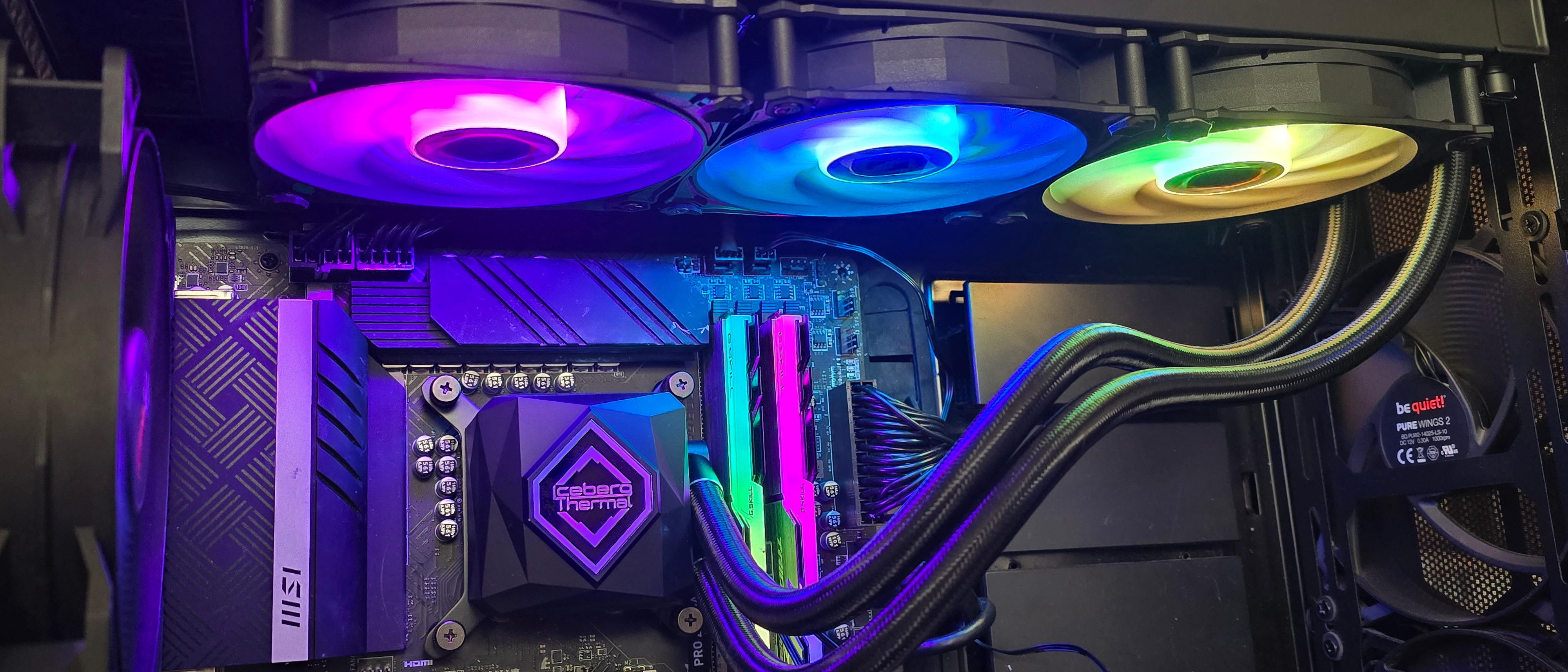Tom's Hardware Verdict
Iceberg Thermal’s IceFLOE has moderate noise levels, chart-topping noise-normalized performance, and a surprisingly low price, backed with an industry-leading 7-year warranty.
Pros
- +
Low noise levels (for an AIO)
- +
Strong noise-normalized performance
- +
Budget price of $89 for the 360mm model
- +
Seven-year warranty
Cons
- -
Can be difficult to remove after installation
Why you can trust Tom's Hardware
Today we’re looking at the latest IceFLOE 240mm and 360mm AIOs from Arizona-based manufacturer, Iceberg Thermal. With a price tag of only $89.99 USD for the larger model, this is one of the cheapest 360mm AIOs currently on the market – but does it perform well enough to knock something off of our list of best AIO coolers? We’ll have to test it first to find out. But first, let’s look at the specs and what comes in the box.
Cooler specifications
| Cooler | IceFLOE 360 | IceFLOE 240 |
|---|---|---|
| MSRP | $89.99 | $74.99 |
| Heatsink Material | Aluminum | Aluminum |
| Warranty | 7 years | 7 Years |
| Socket Compatibility | Intel LGA 1851, 1700, 1200, 115X, 2066, 2011-0 & 2011-3 AMD AM5, AM4, AM3(+), AM2(+), FM2(+), FM1 | Intel LGA 1851, 1700, 1200, 115X, 2066, 2011-0 & 2011-3 AMD AM5, AM4, AM3(+), AM2(+), FM2(+), FM1 |
| Base | Copper Base | Copper Base |
| Pump Speed | 3100 RPM | 3100 RPM |
| Max TDP with Intel’s i7-13700K (Our Testing) | ~250W | 237W |
| Dimensions (with fans installed) | 397mm (L) x 120 mm (W) x 52mm (D) | 277mm (L) x 120 mm (W) x 52mm (D) |
Packing and included contents
Iceberg Thermal’s IceFLOE is protected during shipment with a foam cover, plastic coverings, and the typical molded cardboard.
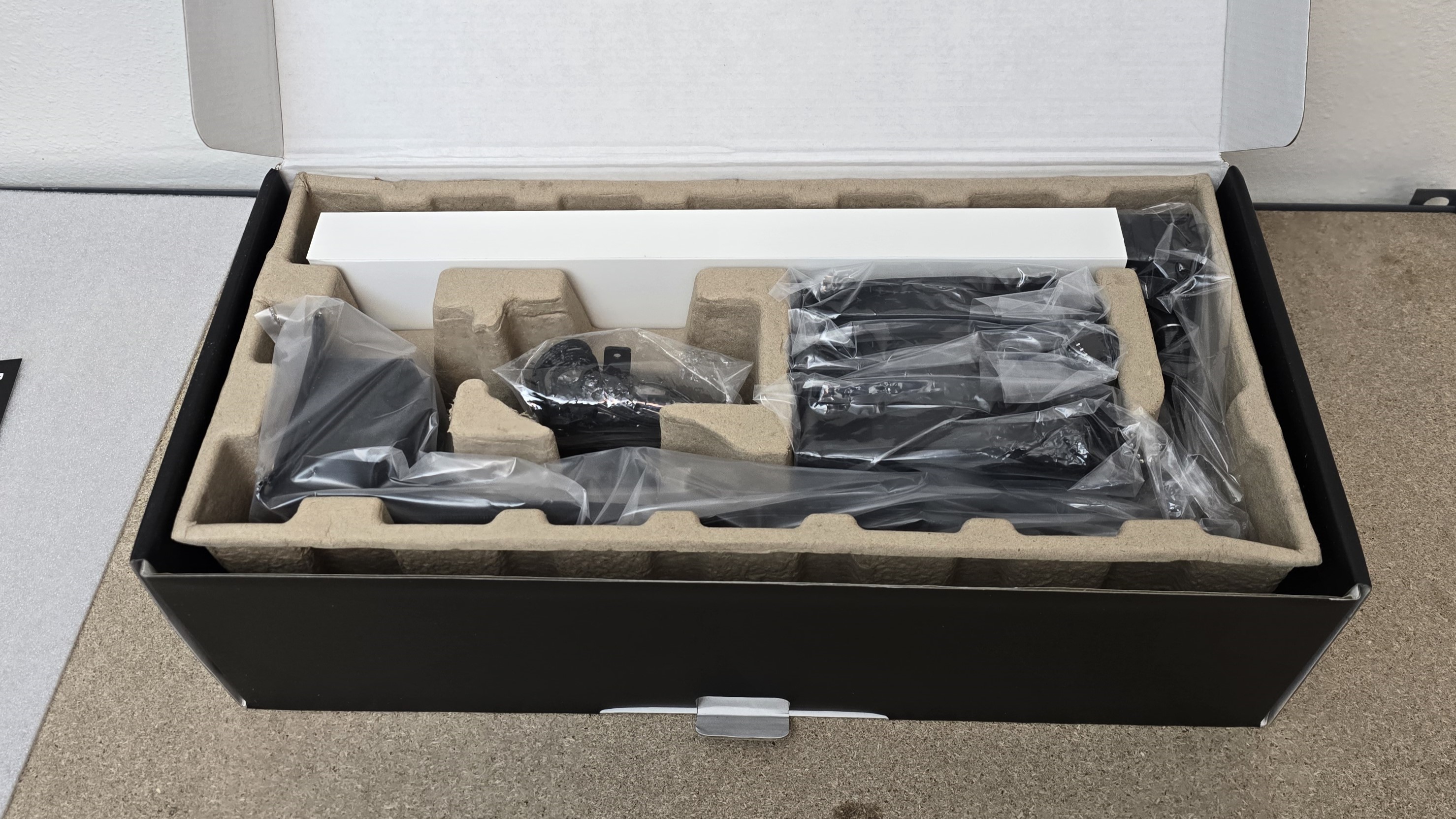
Included with the cooler are the following:
- Radiator and CPU block
- 120mm fans
- Mounting for Intel & AMD platforms
- Hardware ARGB Controller
- Thermal Paste
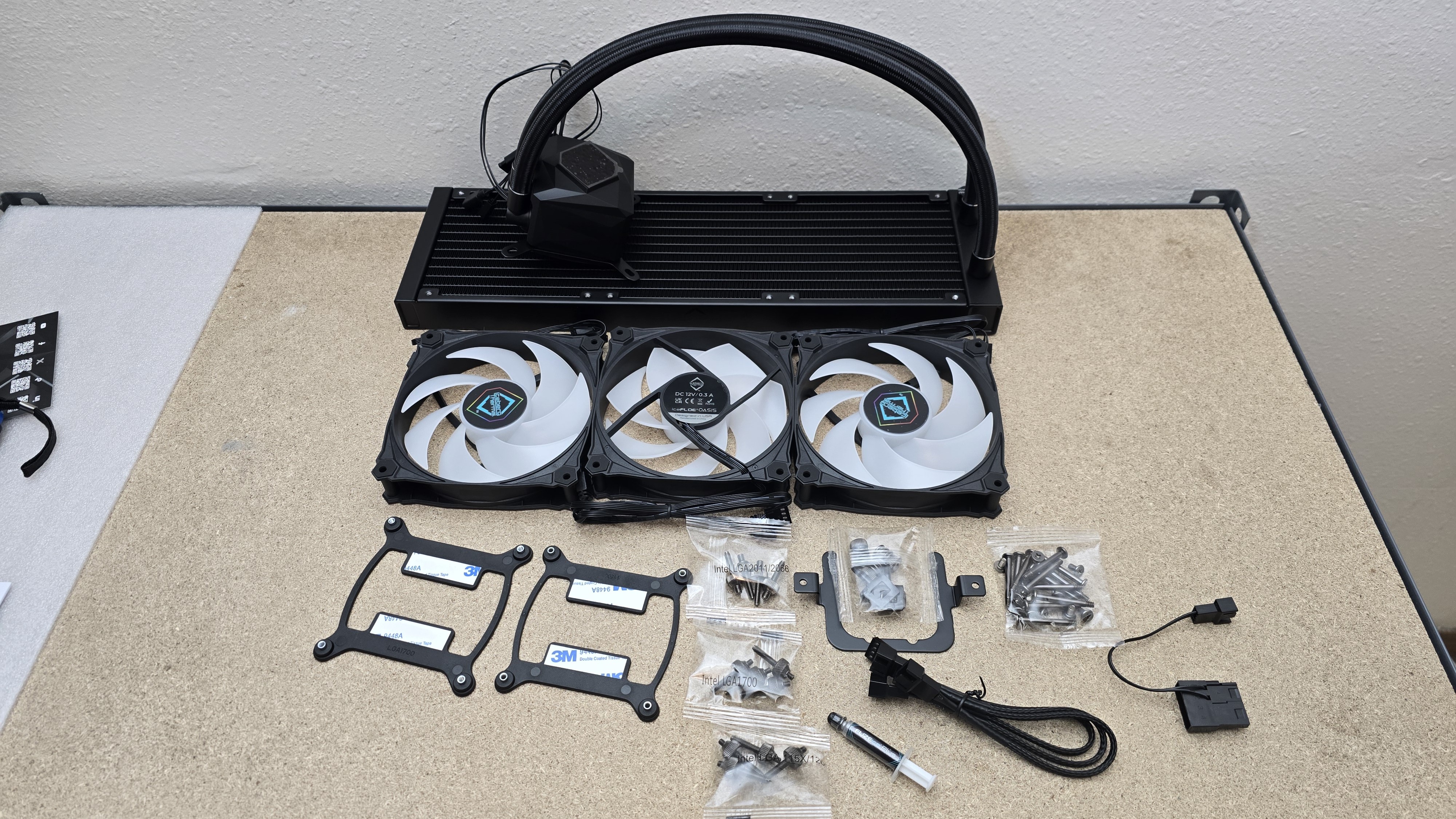
LGA 1700 installation
The installation of Iceber Thermal's IceFLOE Oasis is simple, but I personally dislike the mounting used in the product, because the mounting studs can somethimes be difficult to remove - requiring pliers. But this is a minor complaint, as most users won't change their coolers during the life of their computers.
1. Install the fans against the radiator and then secure the radiator to your case.
2. Press the backplate againt the rear of the motherboards, and then secure it using the included metal standoffs.
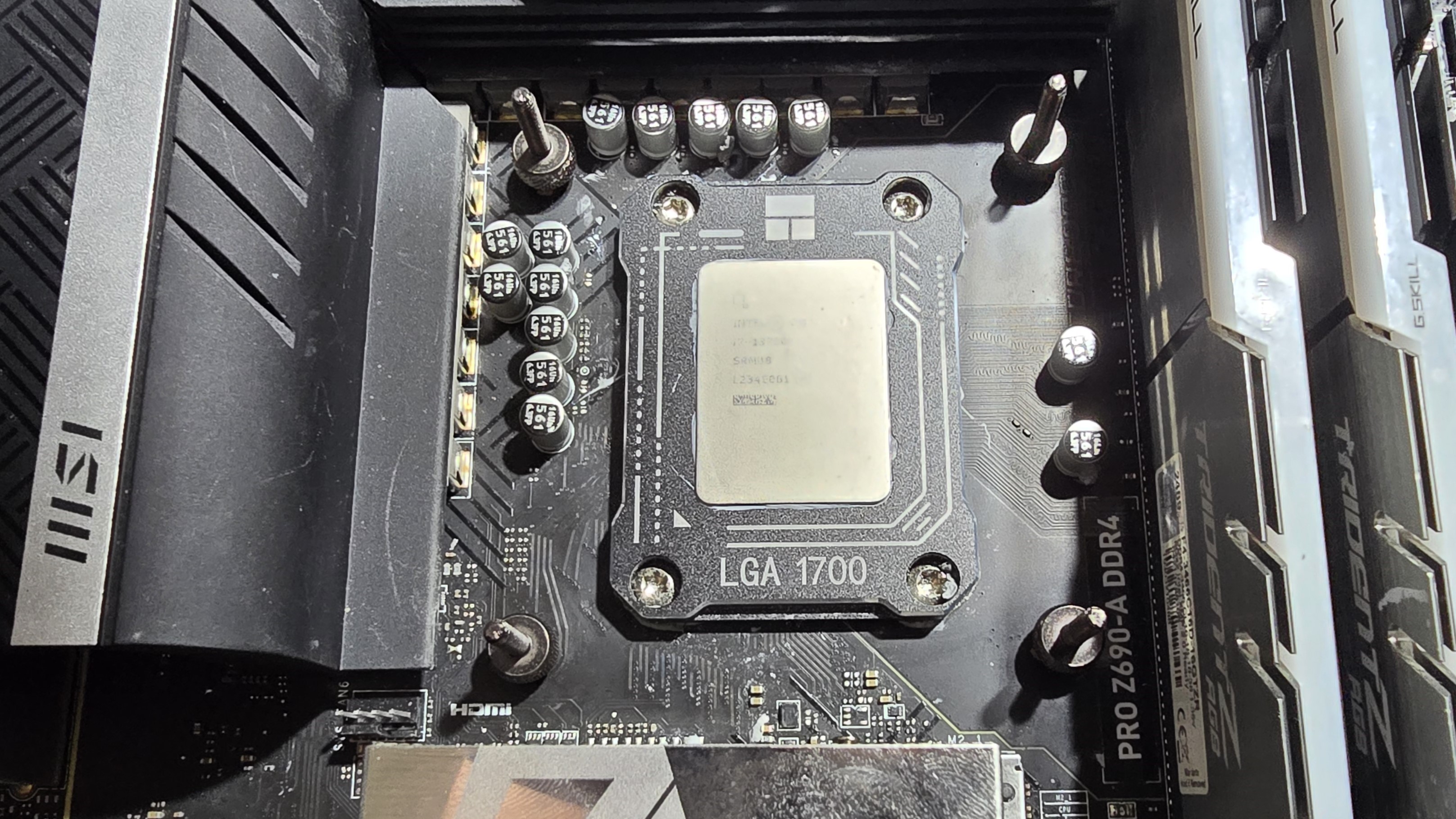
3. Next, you'll need to apply thermal paste to the CPU - and if you're unsure how to do that, see our How to Apply Thermal Paste primer.
4. Place the CPU block on top of the CPU and secure it with the included thumb screws.
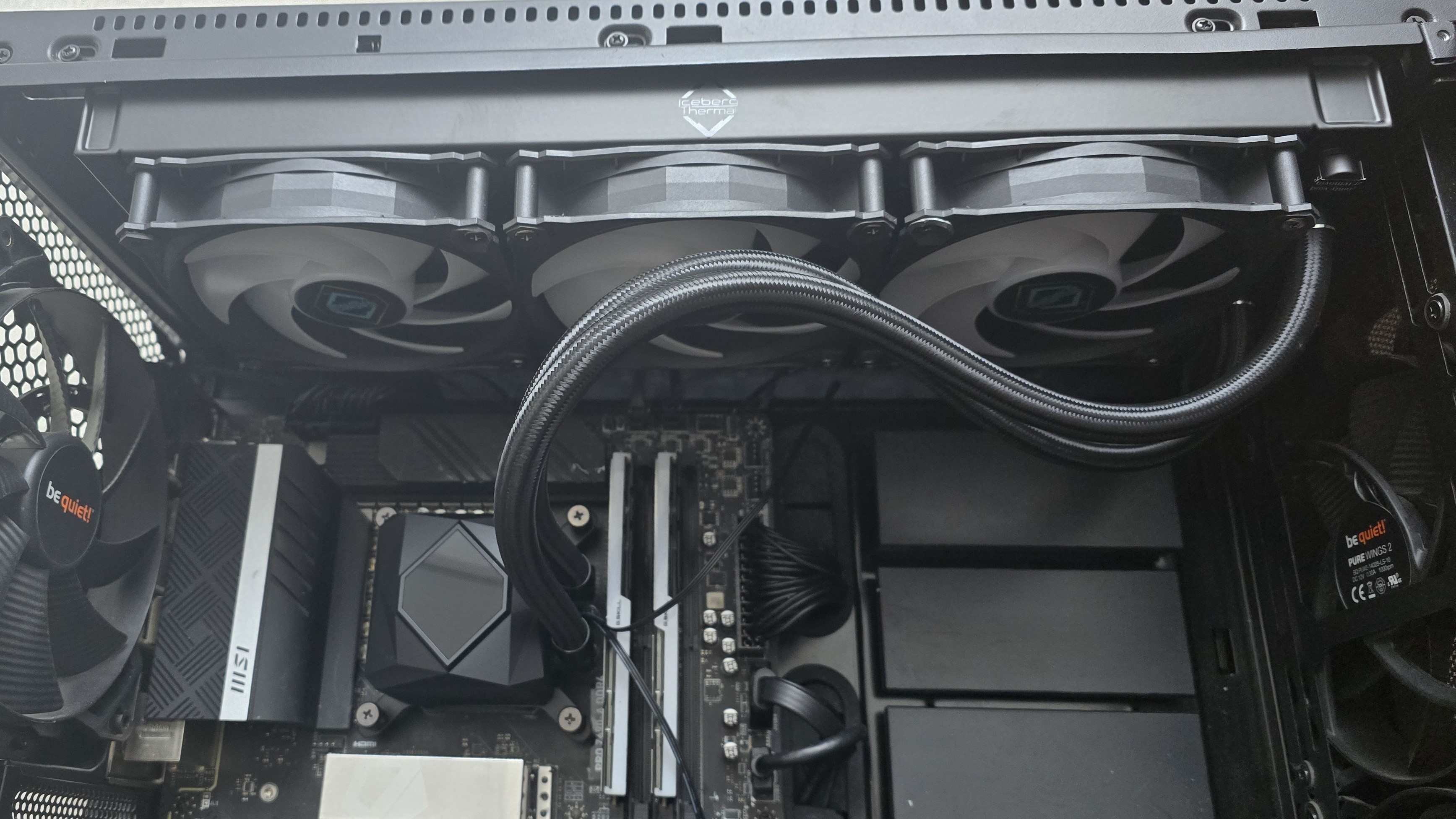
5. Connect the PWN and ARGB headers to your motherboard, and installation is complete.
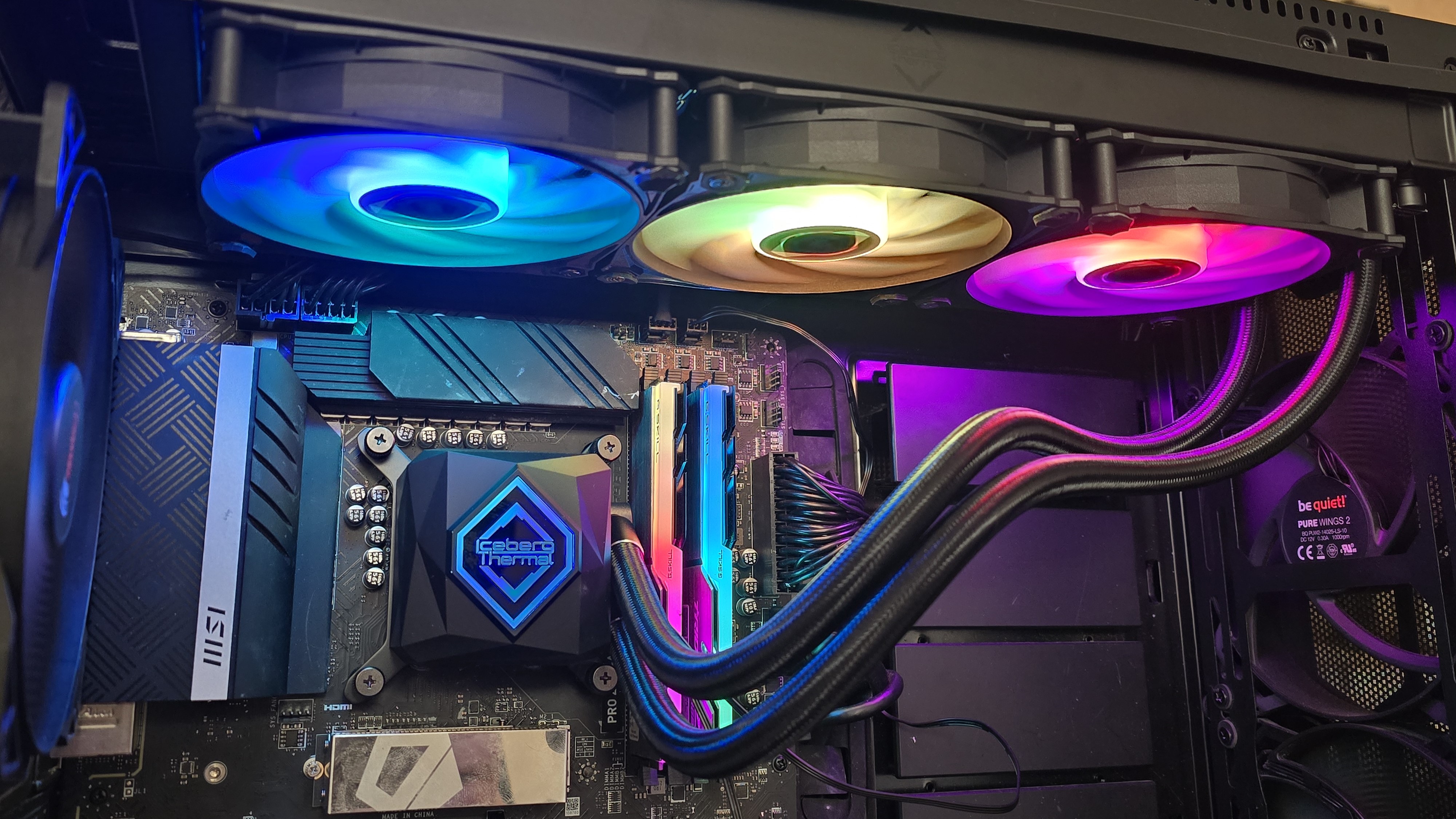
Features of Iceberg Thermal's IceFLOE Oasis AIOs
▶ Low price, backed by industry-leading seven-year warranty
While many current-gen 360mm AIOs on the market are priced at $140 or more, Iceberg Thermal is only charging $89.99 for the IceFLOE Oasis 360. This is an impressive value proposition, as few current 360mm AIOs are available for less than $120 USD – particularly ones with RGB fans.
You would think that with such a low price, the company might skimp on quality - and one sign that corners may be cut is a short warranty period. Many AIOs on the market have warranties that last as little as two years, which doesn’t indicate a high level of confidence in product quality by their manufacturers. But even though the IceFLOE Oasis is one of the cheapest AIOs on the market, Iceberg Thermal offers an industry-leading 7-year warranty – more than twice as long as most of Iceberg Thermal’s competitors.
▶ CPU block with ARGB Illumination
The CPU block is black, and features Iceberg Thermal’s logo illuminated by ARGB lighting.
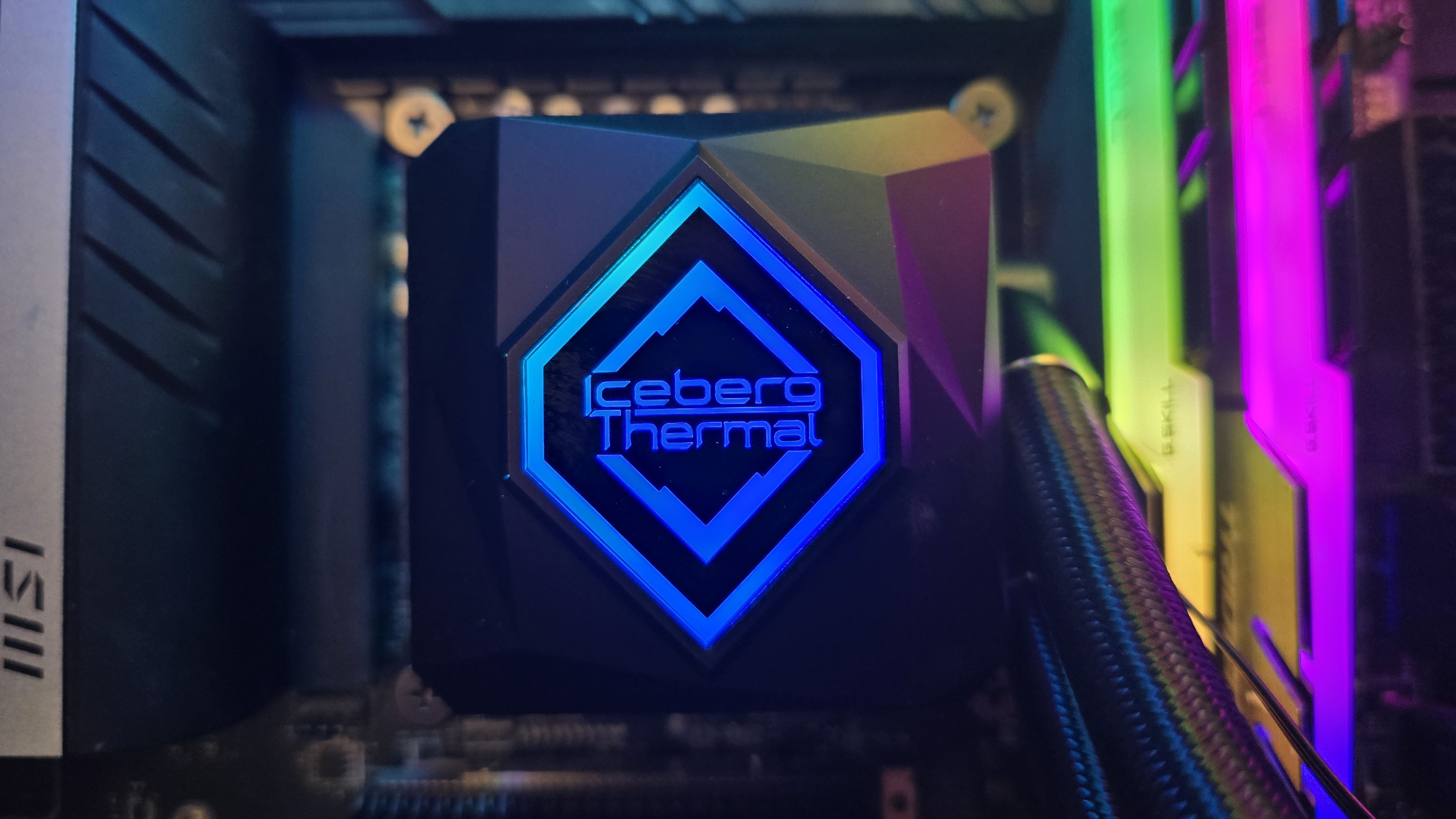
▶ Full RAM compatibility
As with virtually all other AIOs on the market, the IceFLOE Oasis does not interfere with RAM in any manner – leaving you to use whatever tall (or short) DIMMs you prefer.
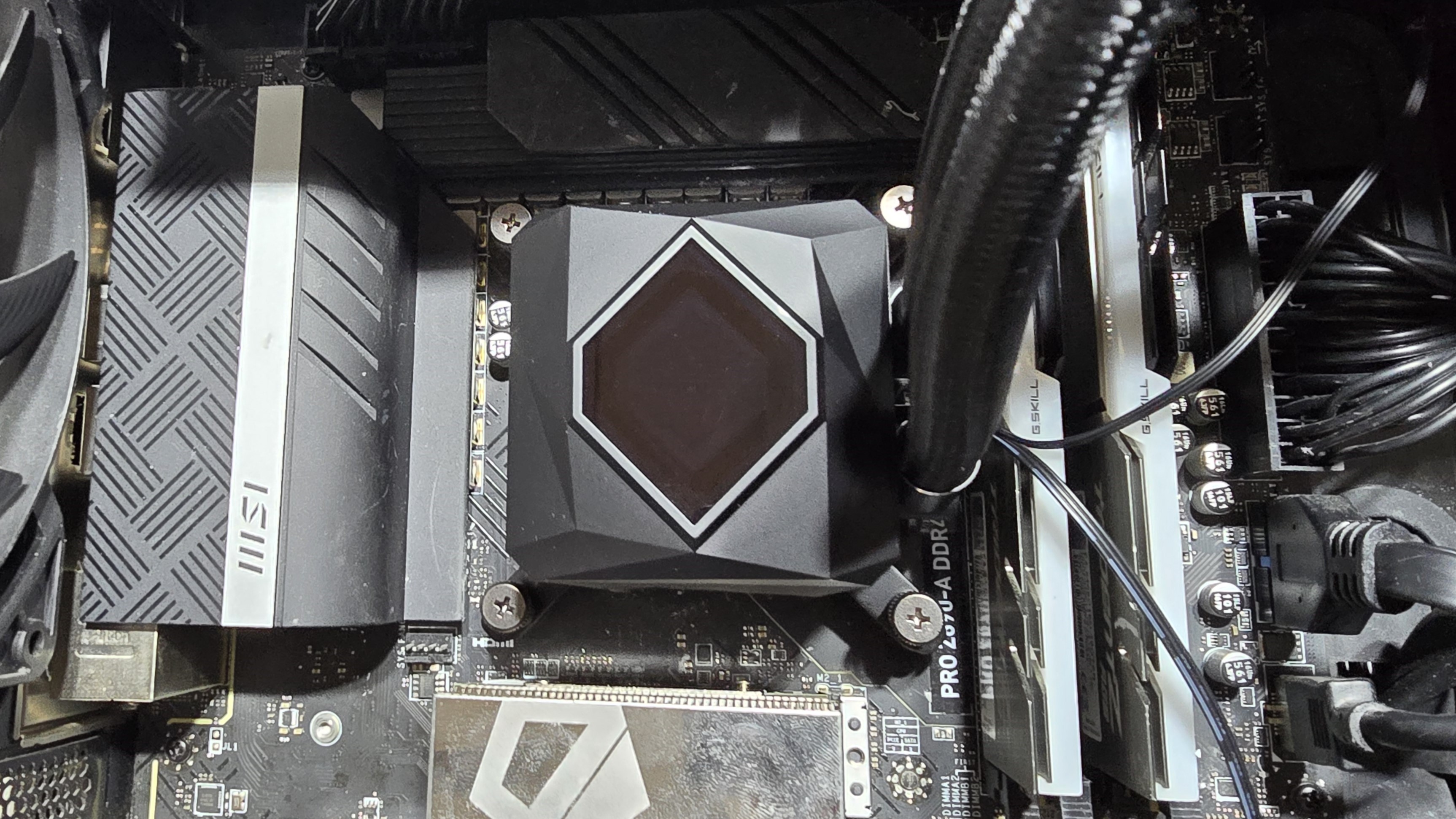
▶ Rotatable Tubing
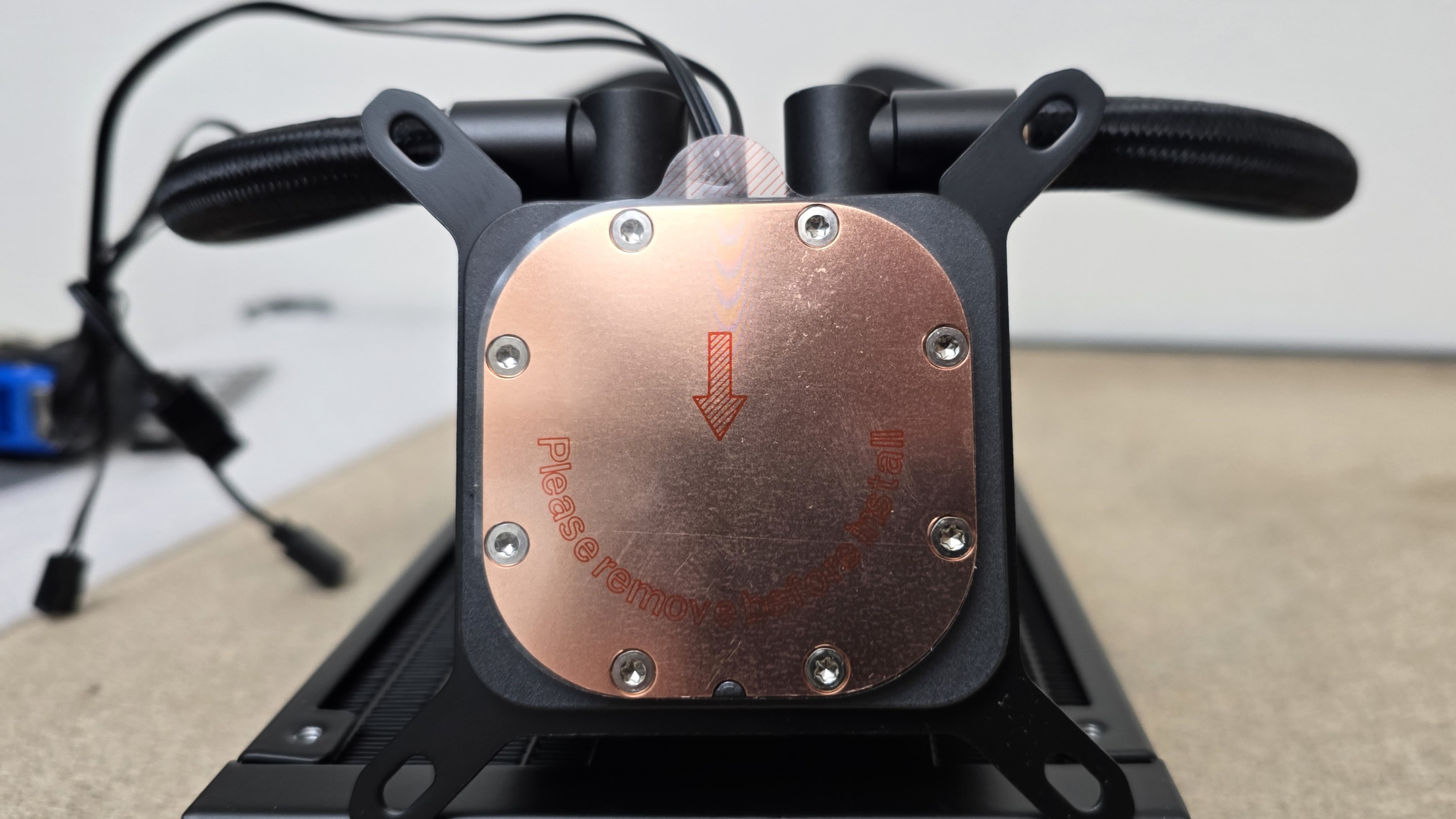
The included tubing is rotatable, which can help ease installation.
▶ Accessible coolant refill port
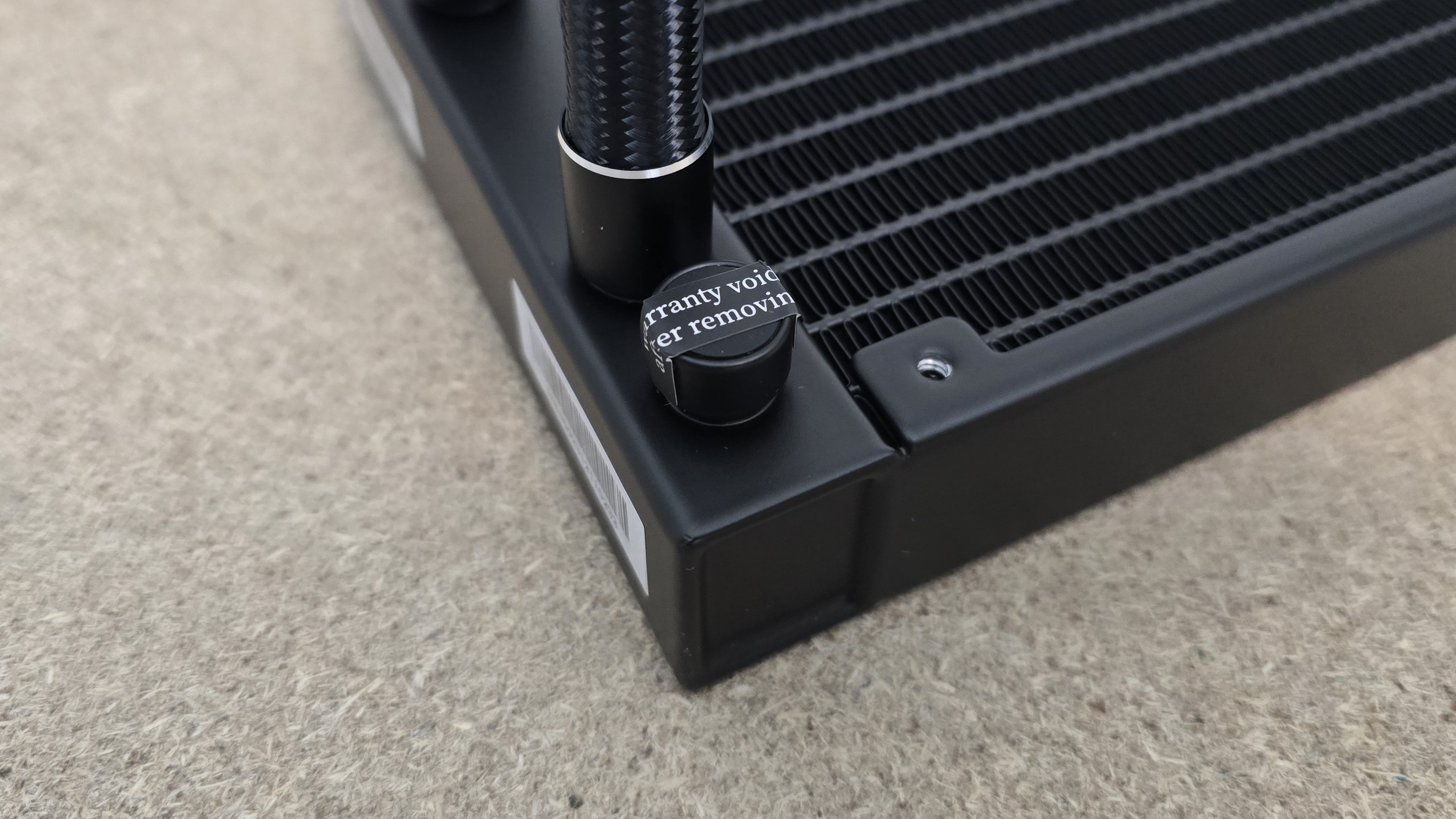
You shouldn’t need to refill the unit’s coolant at any time during Iceberg Thermal’s seven-year warranty – but if you desire to do so after the warranty has expired, a refill port is accessible.
Having a user-accessible refill port is a plus, but I’m a bit annoyed to see yet another “warranty void when removed” sticker, which is illegal in the USA under the Magnuson-Moss Warranty Act. But I’m willing to look past this anti-consumer practice, given the generous warranty length and budget price tag.
▶ 27mm thick radiator
The included radiator is 27mm thick, which is standard for most AIO liquid coolers on the market.
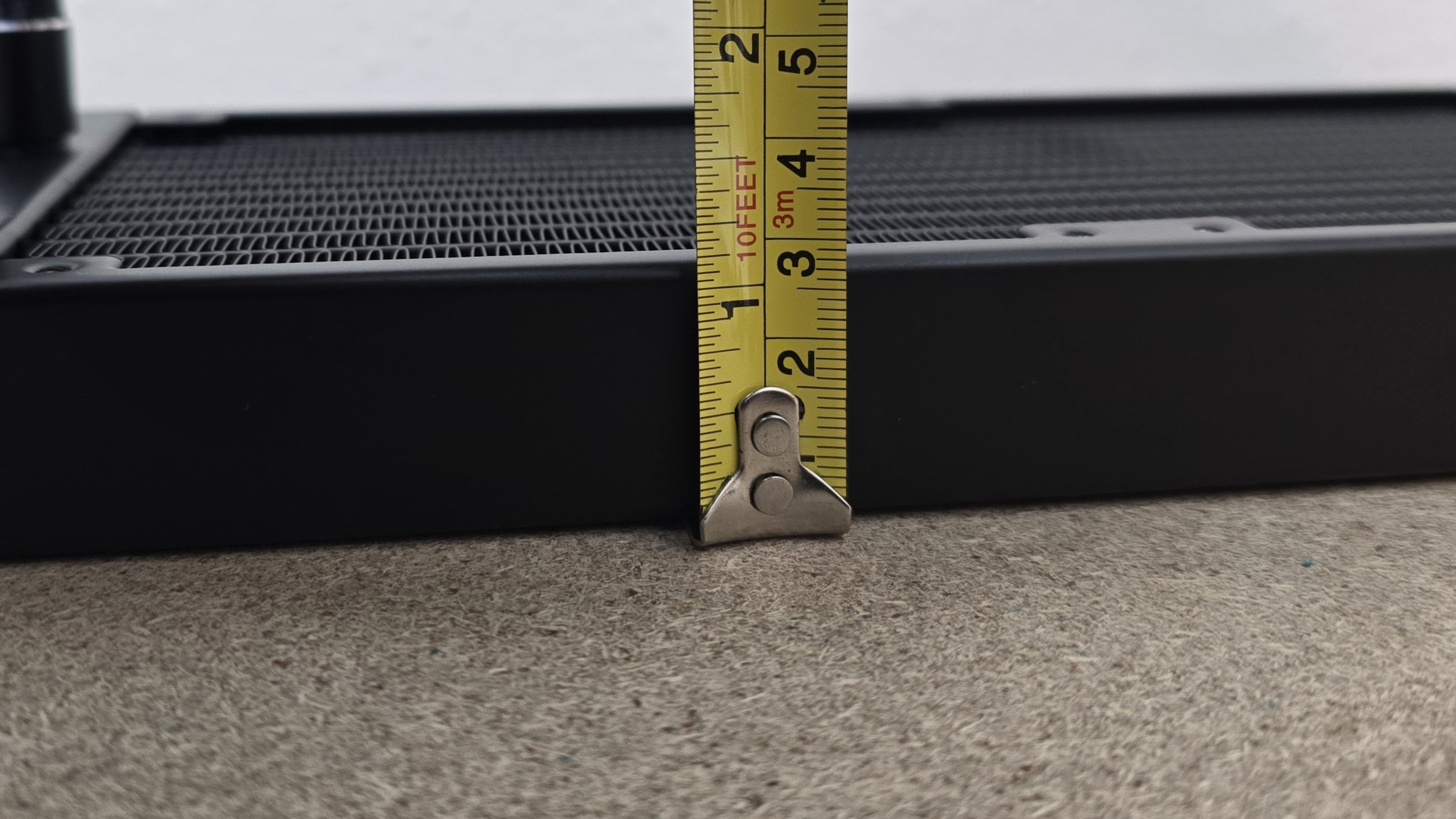
▶ 120mm fans
There’s more to a cooler than just the heatsink or radiator. The fans included also have a large impact on a cooler’s performance, and are directly responsible for how loudly it runs. Included with the IceFLOE Oasis AIOs are two (for the 240mm model) or three (for the 360mm model) 120mm ARGB fans that have been tuned for moderate noise levels. They run quieter out of the box than the fans included with most other AIOs on the market.
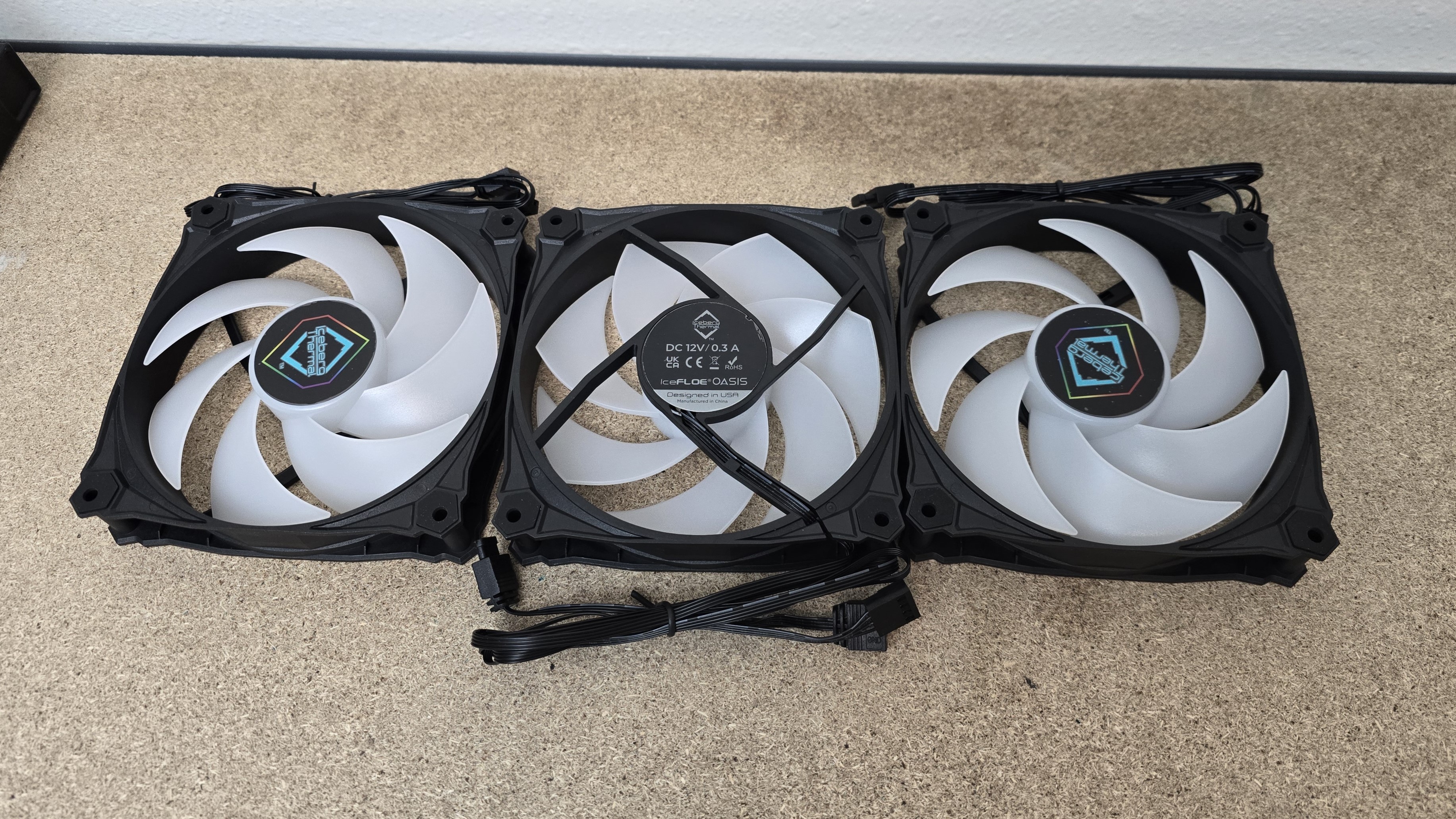
| Model | Unlisted model |
| Dimensions | 120 x 120 x 25mm |
| Fan Speed | Up to 2200 RPM |
| Air Flow | Up to 76.74 CFM |
| Air Pressure | Up to 2.8 mmH2O |
| Bearing Type | Fluid Dynamic Bearing |
| Lighting | ARGB |
| MFFT | 7 year warranty |
LGA1700 Socket Bending
There are several factors other than the CPU cooler that can influence your cooling performance, including the case you use and the fans installed in it. A system's motherboard can also influence this, especially if it suffers from bending, which results in poor cooler contact with the CPU.
To prevent bending from impacting our cooling results, we’ve installed Thermalright’s LGA 1700 contact frame into our testing rig. If your motherboard is affected by bending, your thermal results will be worse than those shown below. Not all motherboards are affected equally by this issue. I tested Raptor Lake CPUs in two motherboards. And while one of them showed significant thermal improvements after installing Thermalright’s LGA1700 contact frame, the other motherboard showed no difference in temperatures whatsoever! Check out our review of the contact frame for more information.
Testing methodology
Today's highest-end CPUs, whether Intel or AMD, are difficult to cool in intensive workloads. In the past. reaching 95 degrees Celsius or more on a desktop CPU might have been a cause for concern. But with today’s top-end CPUs, this is considered normal operation. Similar behavior has been present in laptops for years due to cooling limitations in tight spaces.
All testing is performed with a 23C ambient room temperature. Multiple thermal tests are run on each CPU to test the cooler in a variety of conditions, and acoustic measurements are taken with each result. These tests include:
1. Noise normalized testing at low noise levels
2. “Out of the box”/default configuration thermal and acoustics testing
a. No power limits enforced
b. Because CPUs hit Tjmax in this scenario, the best way to compare cooling strength is by recording the total CPU package power consumption.
3. Thermal and acoustics testing in power-limited scenarios
a. Power limited to 175W to emulate a medium-intensity workload
b. Power limited to 125W to emulate a low-intensity workload
The thermal results included are for 10-minute testing runs. To be sure that was sufficiently long to tax the cooler, we tested both Thermalright’s Assassin X 120 R SE and DeepCool’s LT720 with a 30-minute Cinebench test with Intel’s i9-13900K for both 10 minutes and 30 minutes. The results didn’t change much at all with the longer test: The average clock speeds maintained dropped by 29 MHz on DeepCool’s LT720 and 31 MHz on Thermalright’s Assassin X 120 R SE. That’s an incredibly small 0.6% difference in clock speeds maintained, a margin of error difference that tells us that the 10-minute tests are indeed long enough to properly test the coolers.
Testing configuration – Intel LGA1700 platform

Albert Thomas is a contributor for Tom’s Hardware, primarily covering CPU cooling reviews.
-
Reality_checker It's really nice to see someone test coolers in a real-world setup in today's day and age when so many reviewers just lazily use an open bench. Using an Intel platform was also a bonus for me, since my experience confirms that it's not so simple to choose a cooler based on mainstream reviews. The Arctic Liquid Freezer series definitely doesn't perform as well on Intel.Reply
I bought the 360 version of this AIO based on your review.
Thanks, Albert! -
Achoo22 Built with this just now on the basis of this review and strongly regret it. The AM5 mount is the worst I have ever seen in ~30 years of system building. There are saddle thingies that loop over the default bracket and they are difficult to clamp. And even if you manage to ratchet it down, you're never quite sure you've gotten a good fitment. Meanwhile, there are fifty billion demonstrations of AIO installs from Corsair, Arctic, etc but absolutely none documenting the install of this AIO on AM5.Reply
